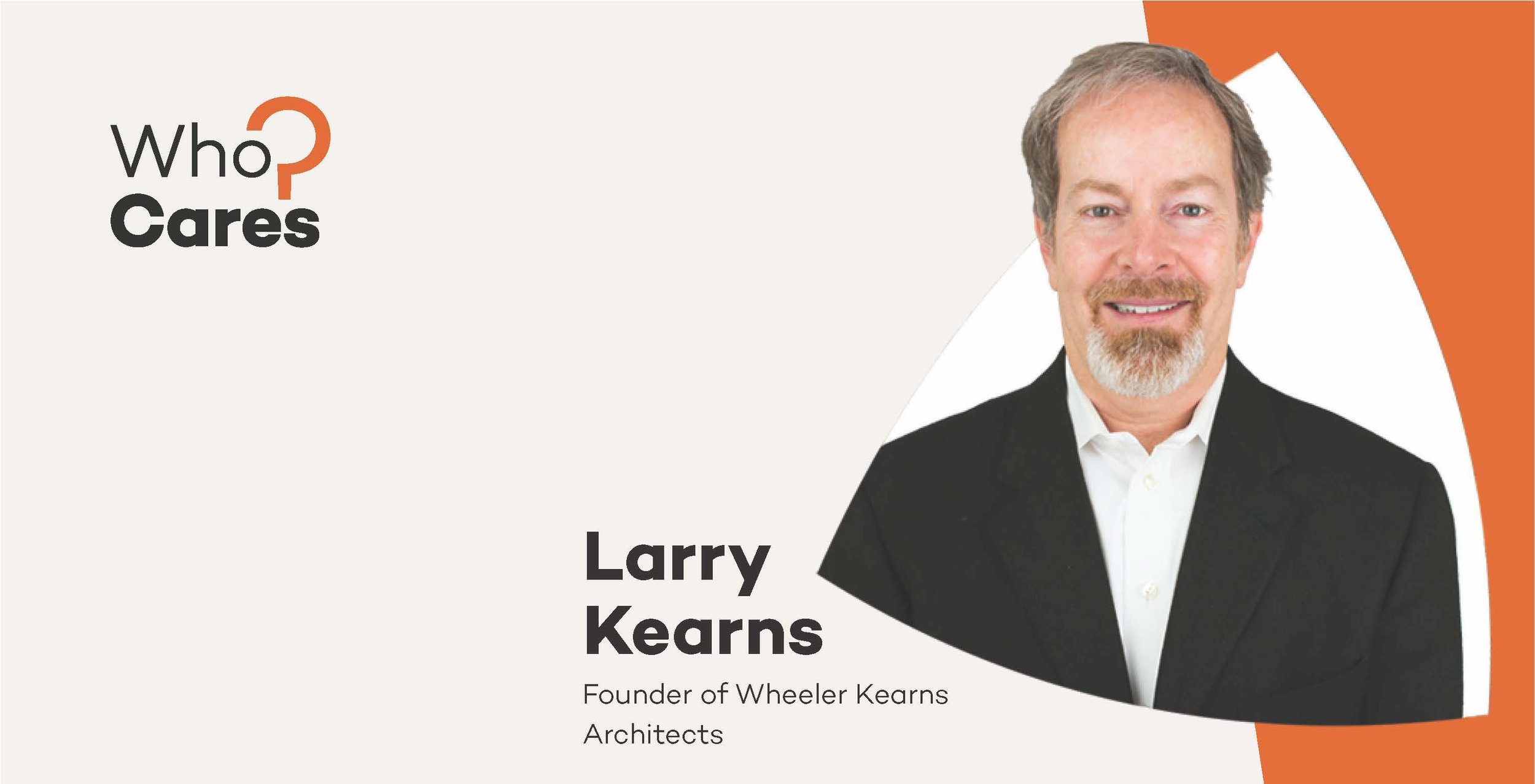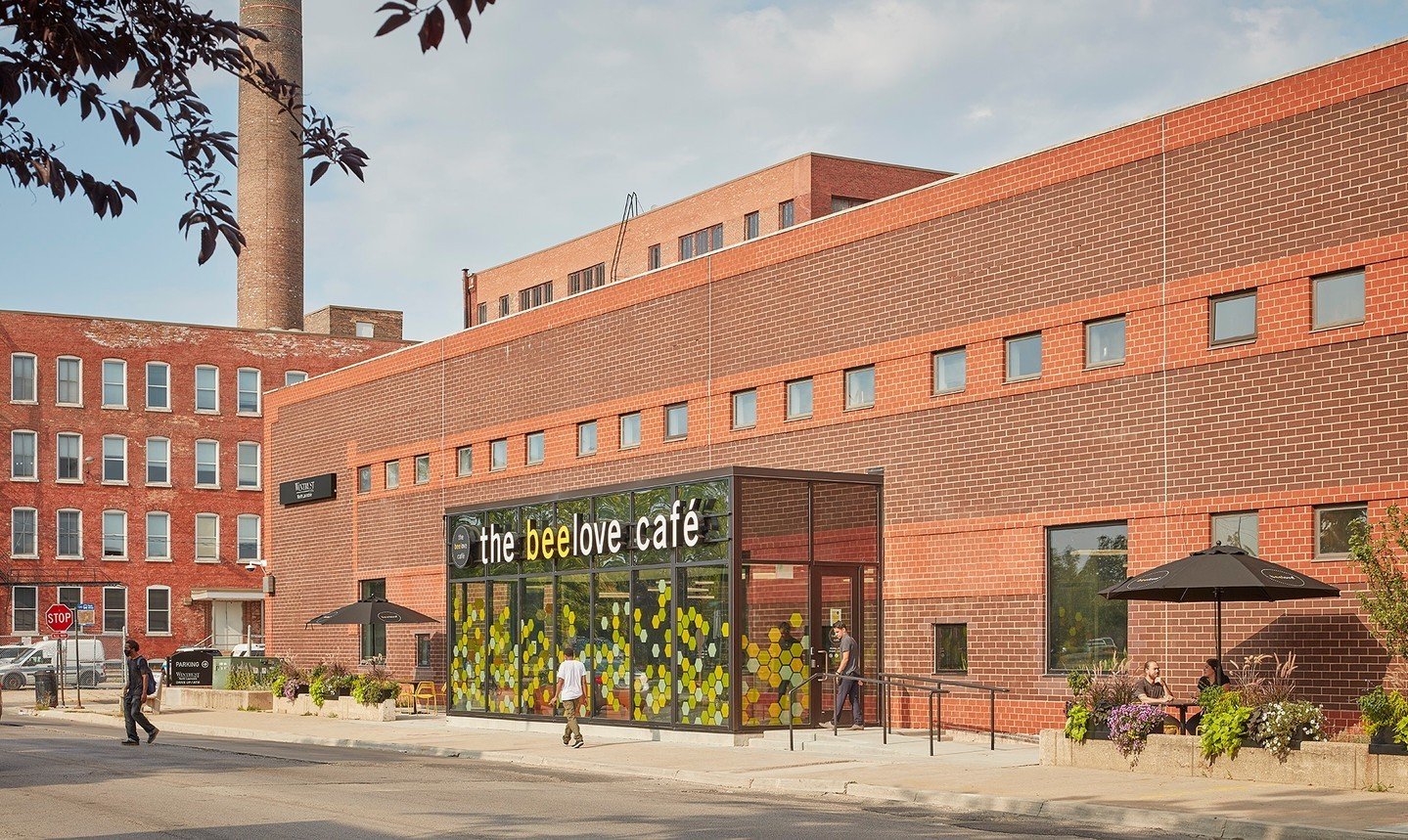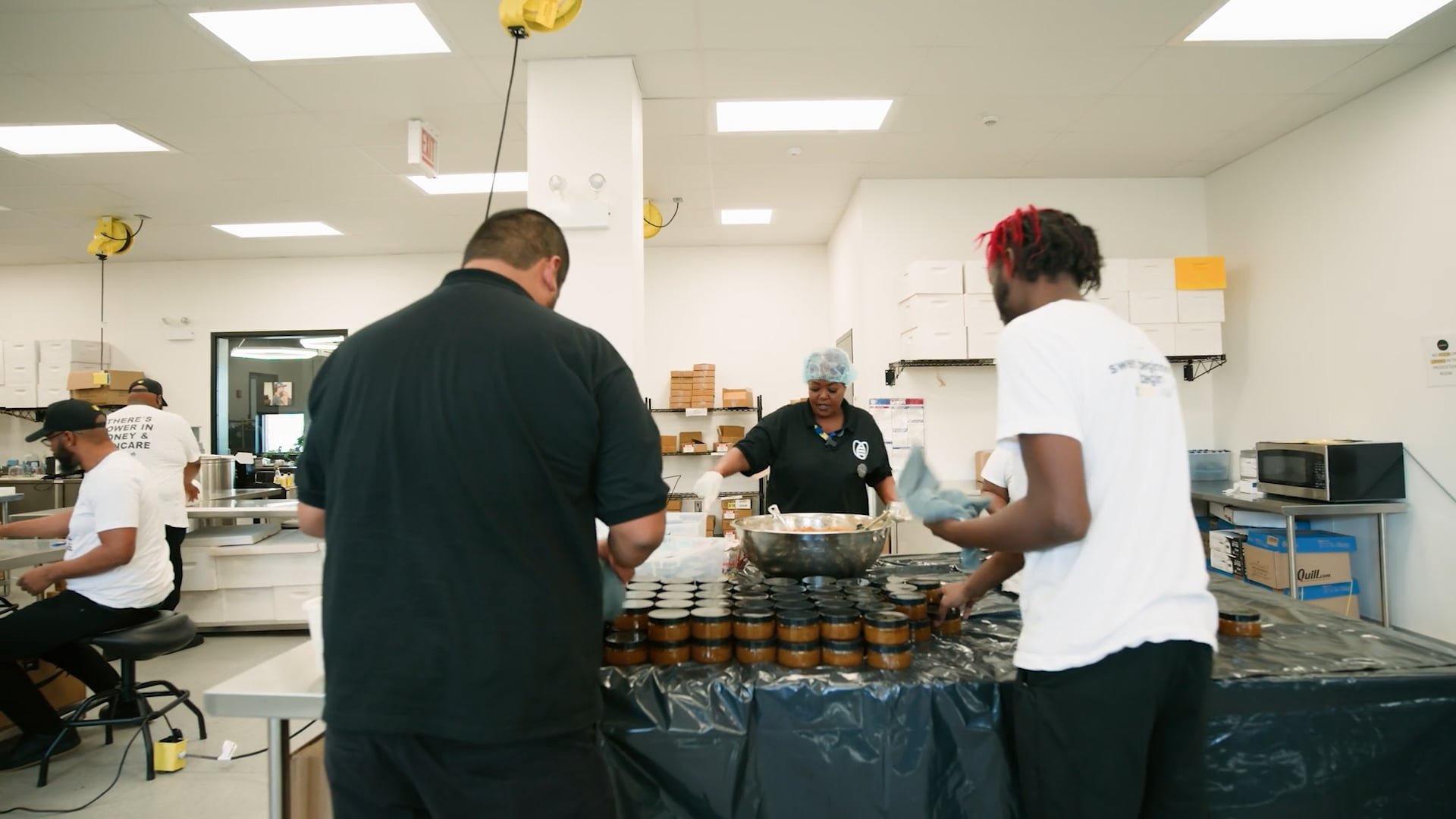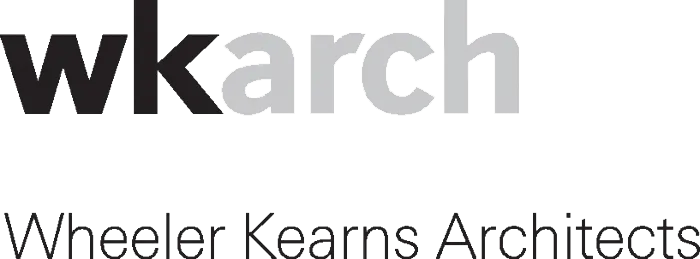Who Cares About Social Impact Through Architecture?
We had a conversation with Larry Kearns, Founder of Wheeler Kearns Architects; an architectural firm dedicated to working on mission-driven projects. Larry is passionate about the impact architecture can have on enhancing and propelling the mission of an organization through intentional design. In our conversation, he shared his insights on how working with mission-driven organizations can be both a benefit to society as well as the culture and success of a company.
How can architectural design propel the mission of an organization?
How do purpose-driven projects influence and benefit high-end projects?
How can a for-profit company be profitable working with nonprofits?
p3: What role can architecture play in being a part of the mission for a nonprofit organization?
Larry: The physical space of a mission-driven nonprofit organization is not a neutral bystander. In our opinion, it either frustrates the mission or supports it. That's the premise we come to our project with. Whereas, I do think that historically, the industry has looked at nonprofit work in a more charitable way; But without tapping into all of the best resources for the project.
We actually never do not-for-profit work pro bono. We see that as pretty limiting; especially if you consider that a facility for a mission-driven organization is not a neutral bystander. The facility is a critical component to achieving their mission. Why would you not put the best resources on that?
From the get-go, we understand these projects are often challenged by their limited resources. That's where they're constrained. It actually is more demanding of a designer to be able to work within constraints and the confines of limited resources. For a designer that's actually exciting.
p3: Why does Wheeler Kearns choose to go this route - working with nonprofits?
Larry: Not-for-profits usually serve the public or are a surrogate for some segment of the public. We're not interested in designing buildings that are money making machines - that exist in the world so an owner can make profit. We're interested in buildings and spaces that serve a long-term purpose for the owner and support the mission of the organization. That can be a residential project or a not-for-profit, like an institution.
p3: How do you connect the mission of the organization to the architecture of the facility?
Larry: For every project, one of the first things we do is to identify an emotional center. It may be a significant part of the building or something fairly humble. But it's that thing that is shared in common ownership and is representative of the mission of the organization.
We designed the new campus for the North Lawndale Employment Network and the emotional center of that building is the organization’s social enterprise called Sweet Beginnings. That social enterprise offers jobs placement opportunities to their clients who are under-employed. This is their mission. And the manufacturing of their product - honey - happens right in the center of the building. It’s a daily, visible reminder of their mission.
That was s a very intentional, counterintuitivel decision. Usually when you say ‘a working space’ you put that in the back. You put your more important spaces out front. This project was different.
We find the emotional center and build the project around it. And to do that, you have to have a deep understanding of the client's mission. So we put a lot of emphasis on understanding the individuals they serve and and what it’s like to walk in their shoes. But, likewise, there's space for the staff and those spaces are equally critical; We have to think about the served and the people serving and optimize both spaces and interlock them in a way that is meaningful to the mission.
p3: how can a Purpose Driven project challenge an architect? How can it and does it inspire an architect to work in this kind of context?
Larry: A lot of people are attracted to our firm because we do mission-driven work. I think a lot of our employees, like myself, are not motivated solely by architecture as a money-making profession. I always say if that was my goal, I picked the wrong profession. But, embedded in architecture I think is a reward for having your work not end up in a file cabinet. It’s actually out in the world and animated by people and used for long periods of time. That's a reward that comes along with it. And if you then stack on top of that the fact that there is a human purpose, well that makes it even richer.
Our employees want to work on these projects and are eager to over-deliver for our clients. They have no problem doing that because they know we're not out there making money for somebody who's already extremely wealthy; we're doing something for the social good.
I like to think about it being analogous to David Brooks's Second Mountain where he talks about the drive to climb the ‘first mountain’ which is largely the notoriety of achievement in your profession. But when you reach the peak of that mountain you realize there is little fulfillment to be found there. And then when you climb that ‘Second Mountain', you're totally after something more - like the rewards that come from purpose-driven work.
p3: Do you only work with nonprofit organizations?
Larry: No, we do high-end buildings for private residential clients - projects that we invest a lot of time and resources toward. And actually, we learn a lot from that sort of work that we can transfer to our not-for-profits. I think of it as an arbitrage of skills. We take skills from one sector and then apply them to another sector. So in that way, we're not solely doing not-for-profit work that's highly constrained by budget, but we're able to work at different ends of the spectrum. We are intentionally doing very high-quality work on one end for private clients and translating the skills and insights we gain into the non-profit profile. You can think of it as a little bit of a Robin Hood idea.
p3: How can a for-profit company be profitable while working with nonprofit organizations who we know are often limited in the resources that they're going to have available.
Larry: Our solution is to have a diverse set of work where we can pursue projects that we're well paid for in achieving very ambitious, complex buildings of extremely high quality; We’re able to learn and earn on those projects. It’s through these projects that we get faster and stronger. We improve our skills and are able to transfer those skills over to the projects that are highly constrained. The design skills we employ on the more constrained projects are a little different; these require more intelligent design insight to achieve the goals of that project within the constraints. At the end of the day, our projects are completely in balance and we're a profitable company.
p3: Is it a 50/50 balance of nonprofit and for-profit work?
Larry: Close to it. For us, we believe it has to be close to 50/50. If we're doing 100% for-profit work, it's meaningless. If we do 10% not-for-profit work, it’s not enough to achieve and maintain that sharpness of design skill that the constrained projects present. It works really well if we're between 40 to 60, which is roughly I think where we are most of the time.
p3: So it sounds like - if I'm interpreting correctly the reality of it - is that you go into it willing to accept being less profitable overall from a revenue standpoint.
Larry: Yes, but there are benefits to this approach that don’t necessarily show up on the balance sheet. Cross-fertilization, for instance. Often, some of our well-heeled clients are sponsors of not-for-profits and some of our not-for-profits have well-heeled people on their board. So that cross-fertilization has always been very valuable to our firm over the years.
But the greatest rewards have nothing to do with money or profit. Our work having purpose is completely marketable for us. It is repeated over and over during employee reviews and when we interview people for positions. Having a purpose to our work is meaningful to our employees. Our average tenure of an employee is over a decade. The right people are attracted to our firm; they come here and they stay here.
We invest a lot into the employees that come to us. We help upskill them. They become smarter and faster. They get more experience. We want them to stay and contribute those things to our firm. Doing this work has allowed us to retain those employees.
Here they get to do high-end work that is ambitious and challenges their design skills as well as purpose-driven work that they know benefits society.
p3: Would you theorize that you get more out of an individual team member because of the work that is presented to them? That they pour themselves into?
Larry: Without a doubt. It's the problem you're solving that is the attraction. These are not easy problems to solve. Often having that extra wind in your sails of ‘purpose’ is a huge motivator. We don't have people here punching the clock. You get involved in a project and there's an emotional commitment.
One of our Architects is getting married in a space that they converted from a gym to a chapel. And the priest, who is our client, is going to officiate it. This architect poured their heart and soul into making that project what it is, and they remain attached to it in a very personal way. That is the kind of thing that happens at our firm because of this work we choose to do.
p3: Would you say that your high-end high-profile projects are better because your team has exposure to these purpose-driven projects?
Larry: Yes. Diversification is invigorating for our team. If you don’t diversify, you can fall into a rut or get too comfortable doing one thing, That is pretty limiting. There's no cross-fertilization there and it can get pretty stale pretty fast. Having a broader spectrum, I think makes you a better designer and contributor and keeps you better engaged as a creator because you cannot get severely rutted or comfortable doing things only one way.
p3: Is there a direct benefit to business development that comes as a result of doing this work?
Larry: Without question. We don't get clients from people flipping through magazines and seeing pretty pictures. Our work comes from a broad network of people. That is a huge benefit of working with not-for-profits. We are exposed to diverse board and that is undeniably a benefit that accrues. And this is true for any company doing work for a not-for-profit; not just architects.
p3: What is Triple bottom line? How do you define it? And how do you achieve it?
Larry: It's People, Planet, and Profit. In our projects, we are often dealing with an urgent need for helping empower a community. I think of a food pantry differently than projects that build human capital. The projects that build human capital are the ones that inspire me the most. The result of that kind of project is not just a happy person; it's a person who can jump higher and run faster to achieve more. You get what one of our clients calls ‘positive multi-generational change.’
When you take a kid who's growing up in poverty and put them in a position where they can be educated and then they have children who can be educated, the chances of back sliding are very slim and the chances of forward momentum are huge. It all starts by changing one life.
p3: What would be your encouragement, any for-profit organization to explore some level of purpose-driven work?
Larry: I would say that the emphasis and importance of a company's contribution to society matters to the buyer; both in B2B and B2C. And it's going to get even more prominent as we go forward and I think that it would be a detriment to a company to ignore it. I think that is pretty certain. It's going to be something people evaluate.
p3: How can a company afford to do this?
Larry: The question truly is, how can you not afford to do this? This is not just something that we can say ‘when you can afford to do it, we’ll accommodate it.’ It's something that has to be more central in order for your company to have longevity. Eventually, your clients are going to demand it.
p3’s Takeaway
Every company should consider the potential impact purpose-driven projects and clients could have on their culture and their craft. Oftentimes, the limitations one is presented with inspire innovations that would have otherwise not been uncovered. These innovations can be valuable assets, tools, new services or products that can be introduced into future projects. Most importantly, purpose-driven work inspires the people doing the work; leading to a deeper investment in the company and the work itself.
To see some of Wheeler Kearns work, check out the case study we created for one of their projects, Mansueto High School:


















